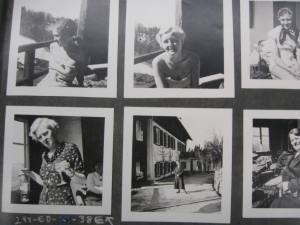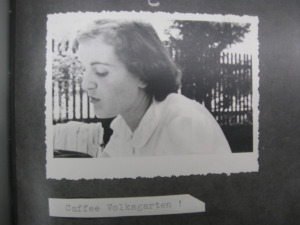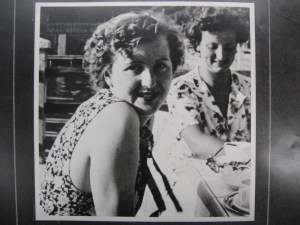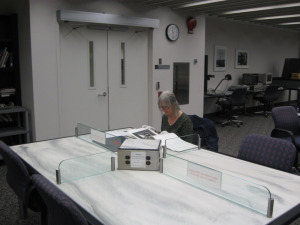Search: best part of “research”
This week, I don a pair of white cotton gloves again as I make my second visit to the National Archives.
Poring over 35 photograph albums of Eva Braun’s, I recall my last experience here three years ago – a mad-rush count-down to get through them all before I had to leave. Overwhelmed as I encountered the albums for the first time, I was attempting to encompass 33 years of one life in the equivalent of two afternoons.
Years of reading and research later, including interviews with some of those who met the subject of my search, my approach is more like forensics, now, as I watch for patterns and connections that form a larger picture.
There are many photos on these pages whose settings and significance I can spot more readily, based on who is present, clues in the background of interiors and landscapes, or even the clothes that are worn.
But it’s that most-elusive quarry that I’m watching for — the evidence of the emotional side of things.
I couldn’t help but zero in on the externals last time. But now, the years I’ve spent following the trail of this life, as my novel’s protagonist does, have led somewhere deeper.
In much the way I can with photos of those whom I know, I can tell when a day was a joy, or a strain; when a smile was a spontaneous response, or a tight, forced mask.
“May I always stay this way” one typewritten caption proclaims of her 18- or 19-year-old self, who had already met her famous lover, 23 years her senior. She is sitting outside over coffee with friends on what was likely a lovely day in Munich.
Her expression seems guileless, innocent. Those who remember her from this time call her vivacious and effervescent.
In time, a kind of golden-cage captivity muted that, some have observed – and she, herself, kept the tightest lock on that cage, denying her own freedom and possibilities.
Four years onto this trail, I troll these hundreds of images again, watching for the signs of where the shifts came. Watching for those large and little junctures at which a life was repeatedly bartered away in the shadow of another, to the detriment of its self.
Phyllis Edgerly Ring’s novel-in-progress, Ordinary Girl, follows a similar trail when its protagonist discovers that her mother had a secret friendship with Eva Braun.
More images can be seen at: http://pinterest.com/phyllisedgerlyr/







